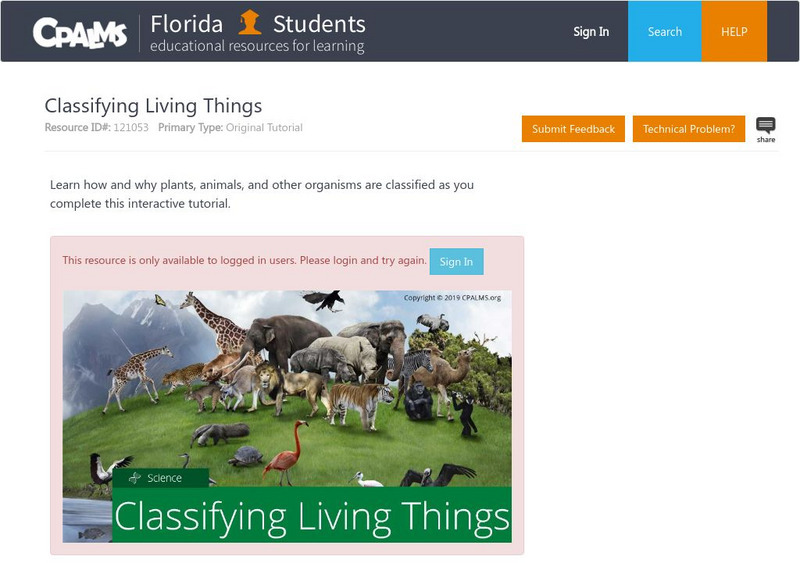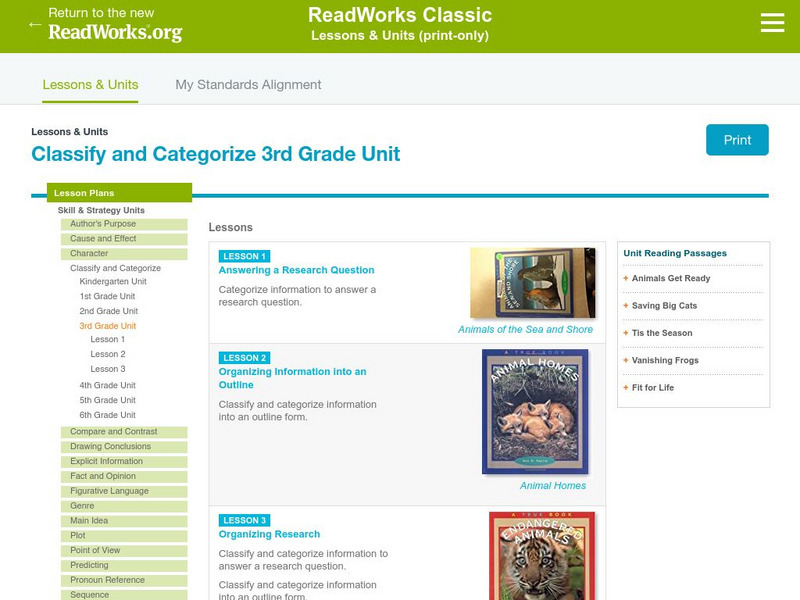Hi, what do you want to do?
Curated OER
Hey, Look Me Over!
Students make observations about mealworms using hand lenses, rulers, and cotton swabs. Students complete their own mealworm observation chart, then they share their observations with the class. This is one station out of five in an...
Curated OER
Adaptations To the Environment
Middle schoolers design and construct an imaginary animal that is perfectly adapted to a particular type of biome. They give the animal a scientific name, place it in a phylum and write descriptions about its behavior, reproduction,...
Curated OER
Saving Habitat
Students pick an animal native to Maryland and research how populations of that animal might be affected by land use changes over the past thirty years. They predict population trends for the next thirty years.
Curated OER
Multiple Intelligences and Holistic Models
Tenth graders identify different genres of literature and the characteristics which identify each genre. They identify which genres best suit their interests, read a novel and perform a skit from the novel or present original artwork...
Curated OER
Tree Study
Students measure the lengths of provided leafs to the nearest millimeter. Students identify trends in the data as well as sourced of inaccuracy and formulate additional questions that could be investigated to enhance their understanding.
Curated OER
The "Nuts and Bolts" of Taxonomy and Classification
Students develop classification scheme that meets the established rules of the Linnaean system. They write one page essay on classification choices.
Curated OER
Arsenic and Human Health
Ninth graders concentrate on arsenic poisoning as an example of the connections among health, geography, and geology as they develop a persuasive presentation about the dangers of arsenic in the drinking water, targeting a specific...
Other
Science4 Us: Animals
In online and offline activities, students broaden their understanding of animals by learning to identify and classify animals into six categories: mammals, birds, fish, amphibians, reptiles, and invertebrates.
E-learning for Kids
E Learning for Kids: Science: Antilles: How Can We Classify Animals?
Naomi teaches diving and meets all kinds of animals underwater. Join her and learn about grouping animals.
E-learning for Kids
E Learning for Kids: Science: Caribbean Sea: How Can We Classify Animals?
Welcome to Hideaway Island where five pirates need to find crews for their ships. Join in and learn about animals with backbones.
CPALMS
Florida State University Cpalms: Florida Students: Classifying Living Things
Learn how all living things are classified.
ClassFlow
Class Flow: Animals Grow and Change
[Free Registration/Login Required] This is a 2nd Grade unit on how animals grow and change. It includes information on life cycles of animals and how to classify animals into groups (i.e. mammal, reptile, amphibian, etc.) There is an...
Utah Education Network
Uen: Keys and Classifying
Sort and classify an assortment of objects relating to classifying Utah plants and animals.
Utah Education Network
Uen: Why Do You Classify This?
Group pictures of animals into similar groups to practice classification.
Utah Education Network
Uen: Classifying Kids
Classification activity relating to plants and animals.
Read Works
Read Works: Classify and Categorize 3rd Grade Unit
[Free Registration/Login Required] A three-lesson plan unit on classifying and categorizing through which students learn how to categorize information to answer research questions and then to organization that information into an...
Read Works
Read Works: Classify and Categorize 4th Grade Unit
[Free Registration/Login Required] A three-lesson unit on classifying and categorizing through which students learn how to organize research into an outline, use text features to locate information, and write a research report. Lessons...
Read Works
Read Works: Animals Get Ready
[Free Registration/Login Required] Students read about how different types of animals prepare for winter. A question sheet is available to help students build skills in classifying and categorizing.
ArtsNow
Arts Now Learning: Classification of Animals: "Connect Your Animal Show" [Pdf]
Fifth graders learn about animal classification by reviewing the taxonomy system, then looking at pictures of animals as if they were scientists, acting out an animal's characteristics, then classifying their animal.
Science Buddies
Science Buddies: Finding Phyla
Animals come in all shapes and sizes, each a small part of the amazing diversity of life. These differences can also help us to classify animals into different groups. Which group do you belong to? Do this experiment to investigate the...
ClassFlow
Class Flow: Classifying Critters
[Free Registration/Login Required] This flipchart helps students understand how to classify animals. There are 3 groups in this flipchart - reptiles, fish, and birds. Included in the flipchart are web links, Activote questions,...
Sophia Learning
Sophia: Animals: Vertebrates: Lesson 3
This lesson will explain the characteristics of animals that are classified as vertebrates. It is 3 of 4 in the series titled "Animals: Vertebrates."
Sophia Learning
Sophia: Animals: Invertebrates: Lesson 3
This lesson will explain the characteristics of animals that are classified as invertebrates. It is 3 of 4 in the series titled "Animals: Invertebrates."























